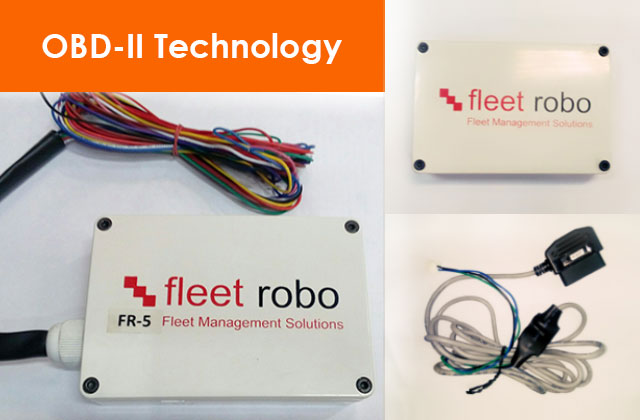With the advent of the digital age and new technology, OBD-II has started to spread its awareness amongst vehicle owners as many of the Telematics Device Providers have started to work towards providing OBD-II solutions. As the name suggests, OBD-II provides useful data for On Board Diagnostics. However, not much of the OBD-II data is being gainfully utilized.
FleetRobo® VTS-OBD-II refers to the solution that caters to vehicle tracking system as well as provides the generic data related to OBD-II. Revolution in the field of vehicle telematics, this solution is a rare option that is available in the Indian market because out of the Devices available, either vehicle tracking information is provided, or only OBD-II with just tracking is provided. A Device that can provide the facility to integrate Panic Button, Fuel Sensors, or any other sensors with tracking and OBD-II data is hard to find. In case you are looking for such a Device, FleetRobo® VTS-OBD-II is the just right option for you to go for.
The owner of the vehicle can monitor the health of the car using the OBD-II data in the same way as a doctor monitors the health of a patient using his medical instrument.
Emerging technology and innovations have made it possible for OBD-II to use a digital communication port to offer real-time data from Engine Control Unit. This in turn allows one to identify and spot malfunctions within the vehicles without much hassles. Its unique feature facilitates savings on the maintenance of the fleet and hence cutting the cost for fleet owners.
Usually, the person driving a car gets to know it very easily if the alignment of the car is not proper or if the Tyre pressure is less, but he doesn’t gets any information about what is happening in the engine. Is the various functional parts of an engine working fine?
But FleetRobo® VTS-OBD-II is a solution that provides you with the major information of your engine control unit that can help you monitor the health of your engine and that too on your computer screen.
Where the OBD-II port of a vehicle provides raw data that needs to be processed and interpreted to extract meaningful reports, FleetRobo® VTS-OBD-II solution is a comprehensive package equipped with the capabilities to monitor, diagnose and represent various fleet parameters related to OBD-II.
Let me take you through some hypothetical situations to understand how FleetRobo® VTS-OBD-II is a perfect solution for your vehicle maintenance.
Suppose your vehicle is on a long trip and the engine load is increasing with time in a way that it has reached the threshold limit and your vehicle is about to break down.
Or else, what if the Coolant temperature of your Engine is constantly rising like rising temperature of boiling water and your engine is about to burst, what will you do?
Adding to the worst you realized that there is no mechanic available even within a range of 20 kms. How will you manage?
This is where FleetRobo® VTS-OBD-II Solution comes to the rescue using which the vehicle owner can monitor the Engine load or the Coolant temperature remotely through the application and can notify the driver well beforehand to take preventive actions.
But wait, does FleetRobo® VTS-OBD-II offers only these two features, no it has a lot more other features which can avoid such unwanted situation for your vehicle or the fleet managers.
So, all in all, the FleetRobo® VTS-OBD-II offers a valuable source of information in the process of remotely troubleshooting problems inside a vehicle.
Adding to the benefits the solution is available for both CAN (Controller Area Network) and KWP (Keyword Protocol), thus serving the needs of the majority of fleet operators.
Therefore FleetRobo® VTS-OBD-II is the most appropriate solution that offers a complete overview of their vehicle’s health along with tracking and other additional features. This in turn helps the vehicle owner to plan the service or maintenance of the vehicle well in advance, which yet again is a great move to eliminate last-minute overhead costs.
Author:
Shreshtha Ahuja

